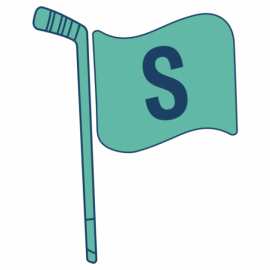We now enter the quai-offseason period between the end of the playoff run and the end of the actual NHL year. This is how that progresses:
Timeline
- The Conference finals will end by June 2 at the latest
- The SCF takes approximately two weeks to play, but June 23 is the last possible date this year for the final game
- 24 hours after the final game or June 15, whichever is later, is the deadline for teams to elect salary arbitration, and the first buyout period opens
- June 27-28 is the entry draft
- Qualifying offers to RFAs are due on June 30, and can be accepted beginning July1
- Free agency begins at noon on July 1
- The player elected salary arbitration deadline is July 5, and the one-day second team-elected period runs through the following day
- Arbitration hearings begin in late July
- The second buyout window opens after all arbitration hearings only for teams that experienced arbitration
Concepts
The offseason begins on July 1. Many contracts for team personnel end on June 30. All NHL contracts roll over into the new year on July 1.
All players under NHL contract on July 1 are considered to be on the NHL team until they are loaned somewhere else. All of them. There is no AHL roster.
The salary cap exists in the offseason.
The way you normally think of the salary cap as a the sum of the cap hits of the players on the 23-man roster is not at all, not even sort of, how the salary cap is calculated in the offseason. There is no 23-man roster. The calculation is complex and is not what you see on salary cap websites. They use a projected 2025-2026 roster which is a useful tool for imagining what the team is building towards.
Teams are allowed to go over the cap by 10% in the offseason. There is no cap crunch, no matter how many times you see that phrase. There are choices, and time to make them.
Teams are restricted to 50 NPCs, but junior players who will be loaned to junior teams in North America are exempt from this count. The Leafs have 47 heading into July 1 absent any trades.
RFAs
- Matthew Knies, Roni Hirvonen, Topi Niemelä and William Villeneuve are all expiring RFAs with no arbitration rights
- Nick Robertson, Pontus Holmberg, Cédric Paré, Reese Johnson, Mikko Kokkonen and Dennis Hildeby are all expiring RFAs with arbitration rights
- If a Qualifying Offer is not issued, an expiring RFA becomes UFA on July 1
UFAs
- Rostered (as in for the playoffs) players expiring as UFAs are: John Tavares, Mitch Marner, Max Pacioretty, Steven Lorentz and Matt Murray
- Non-rostered expiring UFAs are: Jani Hakanpää, Alex Nylander, Nick Abruzzese, Alex Steeves, Dakota Mermis and Nicolas Mattinen
- Steeves and Abruzzese are both Group 6 UFAs where they are UFA not because of age, but because of lack of NHL games played
Buyouts
Because buyouts are a popular offseason topic, some notes on those here. Contracts that are 35+ can be bought out, they just don't provide cap relief. So you can use them for their "go away now" function, but not cap relief. The rules on what is and is not a 35+ contract changed in 2020.
If the salary each year is either static or increases and there are no signing bonuses after the first year, the contract is treated as a standard SPC.
Ryan Reaves is not on a 35+ contract and you can see the buyout here:
https://puckpedia.com/player/ryan-reaves/buyout?s=2025-2026
Contracts with a large percentage of the salary in signing bonuses are essentially buyout proof because only the base salary is reduced. The cap hit remains largely unchanged. Younger players are bought out at a higher percentage of their salary, so the cap hits are lower.
Contract Clauses
A full no-move clause means no team can at all ever, no not even when [insert clever scheme here] happens, trade a player without their consent.
A no-trade clause limits the teams a player can be traded to without obtaining their consent.
Auston Matthews, William Nylander, Morgan Rielly and Chris Tanev have NMCs.
An NMC prevents a team from trading the signing rights to an expiring UFA prior to July 1.
Most, but not all no-trade lists are resubmitted on July 1.
Offer Sheets
Offer sheets, or forced trades as I like to call them to upset people, have complex timing rules and compensation systems.
This excellent Seattle Kraken site for new fans has a good explainer:
It uses last year's compensation limits, this year's are right here in a handy table:
That's all for now, if you are a prospect and draft fan, do not move from your chair, Brian will have lots of draft pieces up for you beginning on June 1.











Comment Markdown
Inline Styles
Bold: **Text**
Italics: *Text*
Both: ***Text***
Strikethrough: ~~Text~~
Code: `Text` used as sarcasm font at PPP
Spoiler: !!Text!!